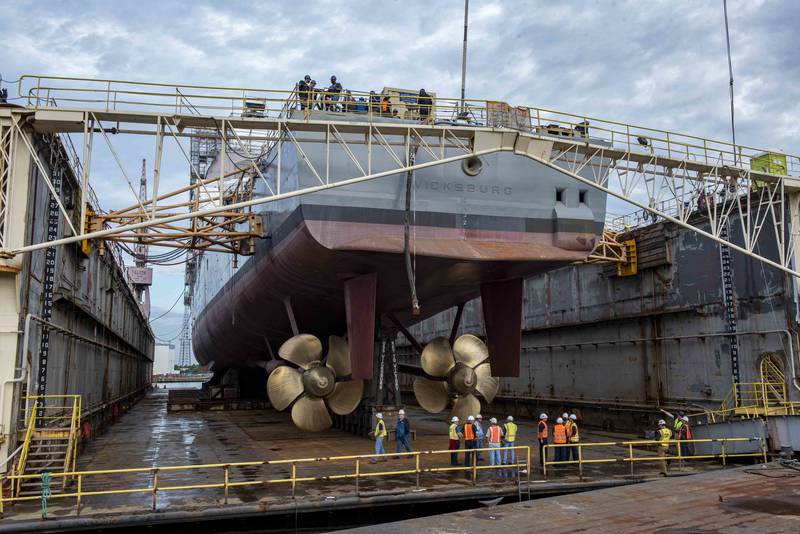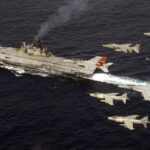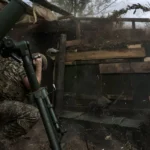
The U.S. Navy’s supply corps will spend the next two years applying lessons from the service’s aircraft fleet to surface ship readiness.
After a 2018 effort pushed the Navy’s F/A-18E-F Super Hornet fleet from a mission-capable rate near 50% to the Pentagon’s goal of 80%, Naval Supply Systems Command tried to apply those lessons to the service’s submarines and the public shipyards that repair them, Naval Supply Systems Command chief Rear Adm. Kenneth Epps told Defense News. That ongoing work has yielded some gains, with attack submarine readiness improving from 60% to 66%, leaders said in the Falls, with expectations to achieve 80% readiness by late 2027.
Now, Epps plans to spend the next two years “hyper-focused” on bringing that “magic” to the surface fleet, and specifically to surface combatants.
“I don’t have to create too much new stuff; it’s taking the energy and leadership and applying that learning to new warfare domains,” he said in an April 9 interview at the Navy League’s annual Sea Air Space conference.
“At its core, although a fighter jet is different than a fast attack submarine, it’s different than an amphibious assault ship — but the means for sustaining it and the calculations for sustaining it and the ecosystem that sustains it are essentially the same,” he said.
Some of the effort is focused on relationships, he said.
For example, naval aviation has long had a triad: within a carrier strike group, the supply officer, the ship’s maintenance officer and air wing’s maintenance officer meet daily to discuss what might keep jets from flying that day, Epps said.
Nothing similar exists in the submarine or surface tribes, though, he noted.
“We’ve lifted that concept to the two other warfare areas, and that has enabled us to gain some of the goodness from naval aviation that we didn’t have before,” Epps said.
He said the triad was about more than a constant dialogue: it’s about problem solving without pointing fingers and understanding all parties are working toward the same goal.
The aviation enterprise in 2022 opened a Maintenance Operations Center in Norfolk, Virginia, to house this multi-community effort. Epps said the submarine force is replicating that now and the surface fleet likely would, too, to allow the partnership between supply officers, maintainers and community leadership to “flourish.”
Prior to the Naval Sustainment system series of efforts, Epps said different commands within the submarine and surface readiness-generation ecosystem would hand off responsibility of a ship’s readiness to someone else as the ship moved to a new phase in its deployment cycle.
Epps said the community leaders — Commander of Naval Submarine Forces Vice Adm. Rob Gaucher and Commander of Naval Surface Forces Vice Adm. Brendan McLane — are now viewed as the supported commander, setting the readiness goals and the big-picture direction. But Naval Supply Systems Command is the designated supply chain integrator; Naval Sea Systems Command owns ship readiness from commissioning to decommissioning; the supply corps officers and the engineers deployed throughout the fleet owe a feedback loop to ensure assumptions about spare parts are correct, for example; and industry is responsible for the capacity to not only build consumable parts but also refurbish complex repairable parts.
Epps said the relationship between all these entities has been a focus for submarine readiness and will be for surface ship readiness, too.
Naval aviation is still committed to 80% mission capable rates for its Super Hornets — which previously equated to 341 jets, and now comes to 333 — and has comparable goals for the other
The submarine community wants 80% of its attack submarines ready for operations at any given time, which Epps said is only achievable if more submarines come out of maintenance availability on times.
And the surface community wants 75 ships mission capable on any given day, which also involves a focus on – time maintenance.
“We track [those rates] in real time and look for all the ways that, when we do slip, what’s the red, how did we get in the red, and how do we fix that and prevent it from happening again?” Epps said.



